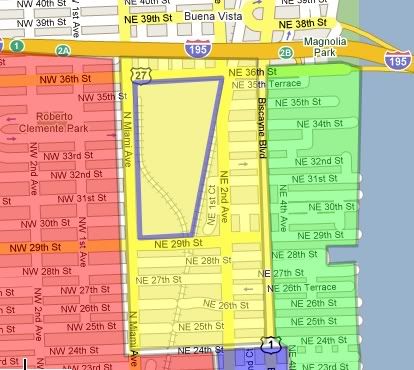
The Buena Vista rail yards used to occupy a huge swath of 56 acres, bounded by 36th and 29th Streets north and south, and by N Miami Avenue and NE Second Avenue west and east, smack in the middle of a decaying area of light manufacturing, garage industry and broken down bungalows just a bit north of downtown Miami, a neighborhood that is now called Wynwood.
The yards were a fenced-in, weed choked eyesore, not a "buena vista" at all, although certain urban archaeologists undoubtedly found it charming. And the land was available, an unused graveyard for rusting rolling stock. But since most real estate development in Miami was done in typical subdivision method, reclaiming swampland to the west and south for new tracts of homes and shopping centers, and since the inner city ghetto of Overtown abutted Wynwood, the area was left stagnant for decades. It was considered unredeemable, too funky by far.
But the healing power of art (as a battering ram for real estate speculation) started to work its magic in Wynwood about a decade ago, as galleries opened up, then private museums (Rubell, Margulies), followed by speculators buying property (both warehouses and parcels of land) all through the neighborhood. Eventually even the train yards were seen as a potential source of development, and in one fell swoop the area was rethought as "Midtown Miami". It would feature big chain stores like Target, Circuit City, Linens 'N Things, Ross Dress for Less, Marshalls, West Elm and Loehmann's, as well as high rise condos and garden apartments. A little oasis of mixed use where rusting metal, garter snakes and (who knows?) the decapitated bodies of mob hits once held sway. Also included would be lots of parking space.










